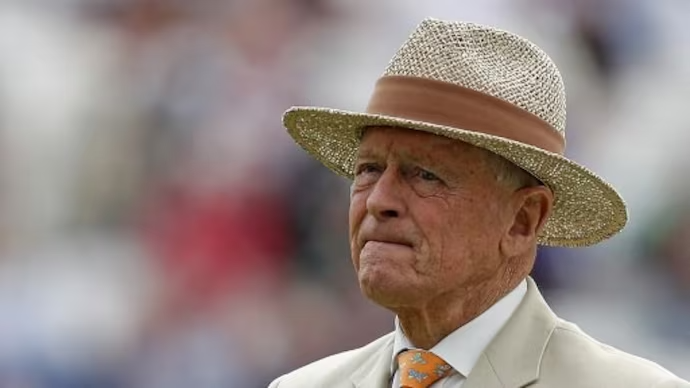Sometimes we go where tourists go, we thought when we booked a trip to the Big Island of Hawaii. We haven’t been to Hawaii in decades, and never visited the Big Island. While Kauai would still be my favorite, the Big Island is now a close second.
Part of the reason might have to do with timing, as we were there during a quieter time. But every experience we had was memorable and unique, starting with landing in the outdoors airport on a lava bed. It was the first, and so far only, outdoor airport I’ve ever landed in.
And I’m not talking about landing outside and getting off the plane outdoors, then walking into a building. The actual airport is also outdoors, with benches under several rooftop covers. The trip already started off great as we landed!
Two Days On The West Side
We only booked the first two nights in a hotel – actually a condo – not too far from the airport, since we were supposed to get there late at night. As usual, we didn’t have definitive plans, but needed a starting point.
So, the first two days of our trip, we explored the west side of the Big Island.
As usual, I started the trip without reading much about the destination. I prefer to explore without expectations, although in this case I knew a few things about the Big Island: it was home to an active volcano, and black sand beaches. And, of course, it was a known tourist destination. Although fortunately, most tourists preferred Oahu.
So, with not much previous knowledge, the trip was a discovery of some sort.
We Discovered Several National Historical Parks
I didn’t know that other than Volcanoes National Park, the Big Island was home to other National Park units. So, when we drove to a site of interest along the coast, I didn’t expect to visit a National Historical Monument.
Kaloko-Honokohau National Historical Park
On our first day on the Big Island, we noticed a brown sign pointing down a road towards the ocean shore. No one else drove down that way, so we turned into it.
The road led to a small structure, and the National Parks sign, telling us we arrived to the Kaloko-Honohokau National Historical Park.
As we found out, the park highlighted the ingenuity of the people of Hawaii who lived in this barren land of lava rock near the ocean. Ancient people of Kaloko-Honokohau developed a system of working and living in balance with their environment, something the present-day state of Hawaii still strives to keep.
They harvested food from the sea and ponds, then traded their surplus with extended family living in the uplands for other staples like taro, breadfruit, and mulberry. As we walked through the park, we saw two fish ponds built over 600 years ago, and walked out to the Aiopio fish trap pond, an artificial enclosure along the shoreline.
Pu’uhonua o Honaunau National Historical Park
On another day, we ended up at the Pu’uhonua o Honaunau National Historical Park, where we learned more about Hawaii’s history. This was in some ways my favorite park on the island, at least from a historical perspective.

In the time of ancient Hawaii, this place was believed to possess extraordinary spiritual power, mana, and it was a center of power. This power came in part from 23 ali’i (chiefs) whose bones were protected in the temple (heiau) Hale o Keawe we saw on the beach. The Royal Gardens were the center of power, open only to the ali’i and those who served them.
My favorite part of the story is though that beyond the Great Wall, the Pu’uhonau served as a refuge for those who broke kapu, the sacred laws and beliefs. Those who made it there, were forgiven and free to return to their lives.
Pu’ukohola Heiau National Historic Site
The last of the National park units on the west side of the island we discovered was a large temple built by King Kamehameha I on top of a hill overlooking the ocean at Pu’ukohola Heiau National Historic Site. This site tells the story of the unification of a nation, the beginning of the Hawaiian Kingdom, the unification of all the Hawaiian Islands under the rule of King Kamehameha I.

History was only part of the reason we enjoyed this park; we also spent time on its small beach, shaded by mature trees, with swimming opportunities in a shallow bay area free of large crashing waves.
Beaches of the Big Island
Of course, when in Hawaii, regardless of being on the Big Island or any other, you will definitely spend time on a beach – or several beaches.

True to our traveling style, we got on the road paralleling the coast, and thought we’d drive down to several beaches, and spend some time on the sand and in the ocean.
We stopped at a few. Some were too rocky, others too crowded, but we found a few where we spent a few hours at. And at the end of the first two days on the coast, we found one that we knew we’d return to.
The sand was white and powder-soft, reminding us of the sand on the Yucatan Peninsula. Though in a cove, the waves were strong at times, but the water was crystal-clean, showcasing several colors, from light teal to the deep blue only the Pacific can be.
As soon as we arrived, I saw a dolphin not too far from the shore leaping out of the water. On a later visit to the same beach, we saw turtles in the water, swimming near us. After our first visit, we found out this beach was a local favorite – and we stumbled upon it by accident.
Coastal Drive and Whittington State Park

Leaving the west side of the island, driving south, we passed through some of the most spectacular coastal views, as we climbed, then descended to sea level again. At the bottom, we stopped at Whittington State Park to enjoy the surrounding black lava hitting the ocean, forming shallow pools.
Turtles On Punalu’u Black Sand Beach
Although not as soft for my feet, the Punalu’u black sand beach was my favorite for another reason: this is where I saw many sea turtles, both on the beach and in the water, large, as well as smaller ones. Since we stayed within walking distance from it, we walked on this beach for two consecutive days.
We stopped here in the late afternoon when we arrived at our destination as soon as we stopped at our room.

As soon as we entered the beach, we saw the first green Hawaiian turtle just climbing up on the sand from the water. Farther, we saw another one. We thought it was a great encounter, photographed the turtles from every angle, and watched them for a while, though they just went to sleep after finding a good spot to stop.
However, when we went back to the same beach the next day, we saw many more of the green turtles of different sizes, some swimming in the ocean, others climbing on and off the shore. I counted at least ten lined up on the shore, but more were swimming in the shallow area nearby. Now this was my most memorable encounter with the turtles on the Big Island of Hawaii – until one swam towards me on another beach, on our last day on the island.
Volcanoes on the Big Island
The one thing I knew about the Big Island of Hawaii before visiting it was that it was home to Kilauea volcano, and several others. Of course, we had to visit them.
Kahuku Unit of Volcanoes National Park
We started with a smaller area of Volcanoes National Park, the Kahuku unit – only because it was closer to us. It reminded me more of Sunset Crater than any other volcanic area on the island. Except for the type of vegetation, which was very different, the landscape was similar. We drove the scenic dirt road to the top of the volcano and stopped several times for short hikes. This was a more subdued volcanic field than I expected to see on the Big Island.
The Main Unit of Volcanoes National Park. Kilauea
However, once we entered the main unit of Volcanoes National Park, things were different. Besides the craters and lava flows, we also noticed the change in weather. The phrase “four seasons in one day” took on a new meaning here. We started the day in the rain, under thick clouds, cool enough to wear long pants and a light jacket.
Later in the day, as we hiked down into a crater, things changed. It was warm enough to feel like Phoenix with humidity.
We started our visit with Kilauea, of course, also the highest point in the park we could reach.

On the way down, we stopped at the vents, where I could smell the volcano, though the smell was not what I expected; instead of sulfur, it smelt more like steamed stinky vegetables – the only way I can describe it. You could get used to it though, wasn’t as unpleasant as sulfur.
After stopping the Visitor Center, we hiked down into a crater, one of my best hikes on the island, through the thick vegetation of a tropical forest to the bottom of the crater, standing on thick lava.
The Chain of Craters Scenic Road
Eventually, we drove the Chain of Craters Scenic Road, one of the most spectacular landscapes in the park and on all the Big Island. After descending about 4.000 feet to sea level, the road dead-ends at the viewpoint of the Holei Sea Arch.

Mauna Loa
The tallest mountain in the world, if counted from its base deep under the Pacific, Mauna Loa is also the largest active volcano on the planet. Far from the main unit of the National Park, in the center of the island, fewer people visit it.
Meaning “long mountain” in Hawaiian, Mauna Loa is it a shield volcano in its shape, meaning it has broad, rounded slopes. This is due to its type of eruptions, producing a high volume of lave flow capable of traveling long distances.

The volcano makes up about half of the Big Island of Hawaii and stands 13,681 feet (4,170 m) above sea level. However, it rises 30,000 feet (9,144 m) from the bottom of the sea, which makes it the tallest on the planet, with a height greater than Mount Everest.
We drove up to the Visitor Center, but stopped there, since past it the road turns to dirt and you could only drive a four-wheel vehicle higher up. The rangers made sure they did not allow anyone in a smaller vehicle past it, they also made sure everyone who was driving higher would spend at least 30 minutes at the Visitor Center level, to help with acclimatization to the height.
We enjoyed the views – and the much cooler weather – there, didn’t feel the need to try to go up higher.
Local Vibe In and Around Hilo
Eventually we made our way to Hilo, the east side of the Big Island of Hawaii, where locals live, and you’ll find fewer resorts. We stayed in town in Hilo, dined at a local health-food restaurant famous for its kombucha. I loved the laid-back atmosphere of the historic town, where each building was a remnant from the past century.

We stayed in a historic hotel that has definitely seen better days; in fact, parts of it looked like sank during an earthquake or volcanic eruption. However, I enjoyed the stay, gave me a more intimate feel for the island, made me feel like I was witness to its history.
The Wild Ginger Hotel was built in 1911 and it looked it. Artwork filled the lobby, and a lush wild garden surrounded the building. The room was old, and looked it, but it was clean and the bed comfortable. No TV in the room, and the Wi-Fi only worked in the lobby (or outside of our room), but I enjoyed that; we had everything we needed there.
But as I was reading some of the reviews, I realized how different the same experience feels for different travelers. Some loved it, others hated it. Yet, it was the same hotel in the same town. It all depends what you are looking for, what you expect.
Waterfalls of the Big Island of Hawaii
The best waterfalls on the Big Island are near Hilo. In fact, it is probably the main reason many tourists show up on this coast. Of course, we wanted to see them, too – even if it was the touristy thing to do.
So, after breakfast at the Wild Ginger (the hotel also included breakfast, while most others on the island don’t), we set out for two of the waterfalls in its vicinity.
Akaka Falls

I enjoyed not only the view of Akaka Falls but also the trail that led to it. The highlight of Akaka Falls State Park, the 442-foot waterfall, surrounded by a lush tropical forest, is one of the most beautiful I’ve ever seen. Though the trail wasn’t open all the way (a part of it was being renovated), it reached the view of the falls, where it stopped with the unforgettable view of the gorgeous falls.
Rainbow Falls

Despite the extreme crowd at Rainbow Falls, we were fortunate enough to find a parking spot when someone just left. However, it required little walking. The falls were near the parking lot, so people didn’t linger. The falls are spectacular, worth the stop. Of course, we also stayed in line for a selfie with the falls from the best viewing spot. What can I say? When in a tourist place, play the tourist. Add people-watching to the experience for some extra fun.
Empty Road Across the Interior of the Island
We went from a crowded spot to an empty road leading towards the interior of the island in minutes. It was surreal. There was not one other car on this paved, smooth road beside us. We stopped to check the map: does this road go somewhere, or is it going to turn into an inaccessible dirt road? The map said it crossed the island, so we continued.
After driving a few miles, we saw another car coming from the opposite direction, and later a few more over the hours we spent on the road.
We also found a stop with a viewpoint and a short trail through a different type of vegetation on the island. Here, it was more of a desert environment, much like Northern Arizona, although the plants looked – and smelled different.
I could also smell the distinctive boiled-spinach I came to associate with the volcanoes of Hawaii. The trail led through a nature preserve, a bird sanctuary. Though I kept hearing the birds, I haven’t seen many, though we ended up at a viewpoint of the Mauna Loa Volcano.
We drove up to the Visitor Center of Mauna Loa Volcano, following the same road. Once again, we experienced a shift from summer heat to late fall temperatures as we witnessed the changing landscape.
Waipio Valley
As we continued along the road across the island past Waimea (town), we drove out to the northernmost point of the island, where we stopped for one of the most beautiful coastal views of Waipio Valley. Here, the coast reminded me of the Na Pali Coast of Kawaii.

I also learned about another natural danger Hawaiians live with: tidal waves. The ancient village of Waipio in one of the most beautiful green valleys I’ve ever seen was wiped out by a tidal wave.
Now, some of it is rebuilt, but only families who live there and locals they invite can drive down into the valley. All others – including us – can stop at the top of the hill, and enjoy the view of the valley, the bay and the shoreline.
Back on the West Side – Swimming with Green Sea Turtles
Before leaving the island, we returned to our favorite white-sand beach, where this time, two turtles joined us in the water, coming close enough that I almost could’ve touched them.
It was a perfect end to our visit to the Big Island of Hawaii.
Source link




